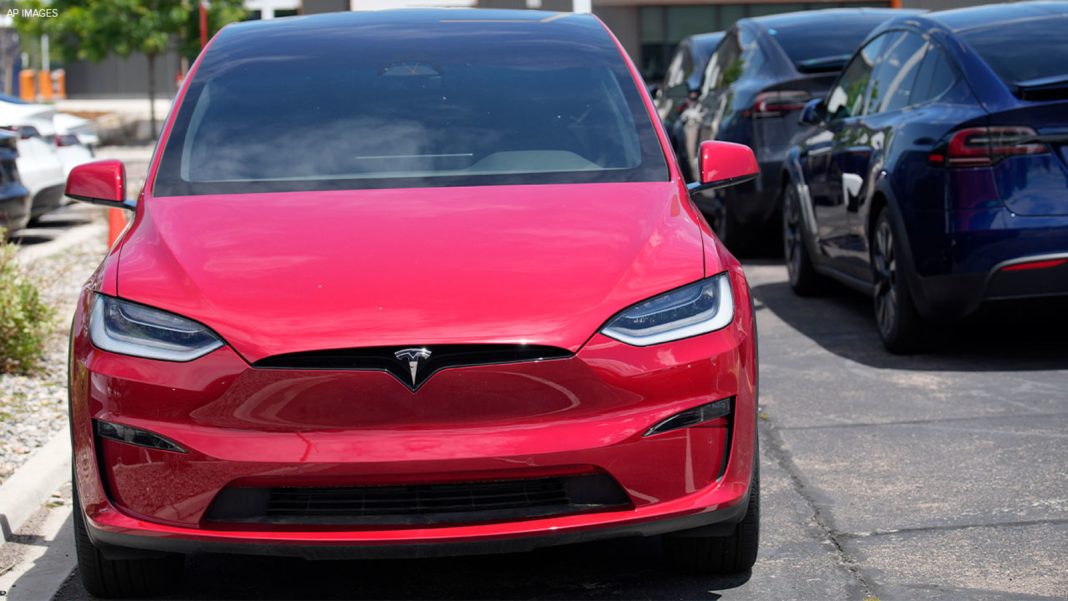Tesla, the Austin-based electric vehicle (EV) manufacturer, experienced a decline in global sales for the second consecutive quarter, indicating a weakening demand for its products and electric vehicles in general. From April to June, Tesla sold 443,956 vehicles, a 4.8% decrease compared to the same period last year. However, this figure exceeded analysts’ expectations of 436,000 units. The announcement of better-than-expected deliveries caused Tesla’s stock to rise by 10% on Tuesday. Despite overall sales decline this year, the company has managed to recover from previous losses with a 60% increase in stock value since reaching a 52-week low in April.
While demand for EVs is slowing down globally, most automakers are still experiencing growth in this market segment. Tesla, however, is facing greater challenges due to its aging model lineup and higher average selling prices compared to other manufacturers. Nonetheless, Tesla remains the leading electric vehicle maker worldwide, having sold 830,766 electric vehicles in the first half of the year. This puts it ahead of China’s BYD, which sold 726,153 EVs during the same period.
One positive aspect for Tesla is that it sold over 33,000 more vehicles in the second quarter than it produced, which will help reduce the inventory at its stores. However, competition from traditional and emerging automakers is intensifying, as they attempt to gain market share from Tesla. The upcoming release of U.S. sales figures from other automakers will provide further insight into the state of the EV market.
Tesla did not provide an explanation for the decline in sales, but this trend is likely to continue when the company releases its second-quarter earnings on July 23. Notably, Tesla’s sales were primarily driven by its smaller and less expensive Models 3 and Y, with only 21,551 of its more expensive models (including X and S) and the new Cybertruck sold during this period.
Despite the decline in sales, Tesla’s efforts to stimulate demand through price cuts and low-interest financing have had limited success. In April, the company reduced prices by $2,000 for three of its five models in the United States. It also offered attractive financing deals, such as 0.99% financing for up to six years on the Model Y in May and interest rates as low as 1.99% for three years on the rear-wheel-drive Model 3 in June. Nevertheless, these measures have not been able to generate significant sales growth.
According to Jessica Caldwell, head of insights for Edmunds.com, Tesla is struggling in a market where most early adopters of EVs already own one, and mainstream buyers are skeptical about the capabilities of electric cars. She also noted that Tesla’s “haphazard” price cuts no longer have the same impact as before, as consumers now expect them. Additionally, Tesla’s aging model lineup and falling used Tesla prices have made it more attractive for potential buyers to purchase used vehicles instead of new ones.
Looking ahead, Caldwell does not foresee any major catalyst this year that would significantly boost Tesla’s sales unless there is a spike in gasoline prices. She also mentioned that Elon Musk’s shift to the right since taking over Twitter has negatively affected the brand’s image.
Nevertheless, Wedbush analyst Dan Ives remains optimistic about Tesla’s future. In a note to investors, he described the second-quarter sales as a “huge comeback performance” and stated that the worst is now behind the company. Ives attributed this positive outlook to Tesla’s cost-cutting measures, including a reduction of 10-15% in its workforce, which helped preserve profitability. He believes that better days are ahead for Tesla as its growth story returns.
In January, Tesla predicted “notably lower” sales growth for this year. The company stated that it is currently between two major growth waves: one driven by the global expansion of the Models 3 and Y, and another coming from the release of the Model 2, a smaller and more affordable vehicle with an unknown launch date. Tesla is scheduled to unveil a purpose-built robotaxi at an event on August 8, which could potentially contribute to future sales growth.
In conclusion, Tesla’s recent decline in global sales reflects a broader slowdown in demand for electric vehicles. Despite being the top-selling electric vehicle maker worldwide, Tesla faces challenges due to its aging model lineup, relatively high prices, and increasing competition from other automakers. Efforts to stimulate demand through price cuts and financing offers have had limited success. While some analysts remain optimistic about Tesla’s future, others believe that without significant catalysts, sales growth may remain subdued.


